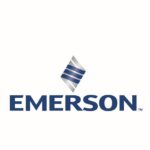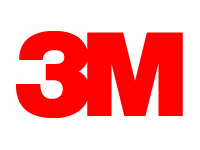#13: Advance personalized learning
All text taken from "Grand Engineering Challenges of the 21st Century", National Academy of Engineering
For years, researchers have debated whether phonics or whole-word recognition is the best way to teach children how to read. Various experts can be found who will advocate one approach or the other.
Ask an astute first-grade teacher, though, and the answer is likely to be that it depends on the kid. Some pupils respond more favorably to the whole-word approach; others learn faster with phonics. Young brains (and older brains, for that matter) are not all alike. Learning is personal.
Throughout the educational system, teaching has traditionally followed a one-size-fits-all approach to learning, with a single set of instructions provided identically to everybody in a given class, regardless of differences in aptitude or interest. Similar inflexibility has persisted in adult education programs that ignore differences in age, cultural background, occupation, and level of motivation.
In recent years, a growing appreciation of individual preferences and aptitudes has led toward more “personalized learning,” in which instruction is tailored to a student’s individual needs. Personal learning approaches range from modules that students can master at their own pace to computer programs designed to match the way it presents content with a learner’s personality.
Why is personalized learning useful?
Some learners are highly self-motivated and self-driven, learning best by exploring a realm of knowledge on their own or at least with very little guidance. Other learners prefer some coaching and a more structured approach; they are typically self-motivated when the subject matter appeals to their interests. Still another type is more often motivated by external rewards and may learn best with step-by-step instruction. Some may resist learning altogether and have little motivation or interest in achieving goals established by others.
These general categorizations provide a base for developing personalized instruction, but truly personalized learning could be even more subtly individualized. Within the basic types of learners, some prefer to learn by example, others by finding answers to questions, and others by solving problems on their own. Under different conditions, people might even switch their preferences, preferring examples in some contexts but questions in others.
Not surprisingly, many efforts to take this into account make use of computerized instruction, often in the classroom or via the Internet. Among the many projects attempting to meet the personalized education challenge are “intelligent” Web-based education systems, development of “recommender” systems that guide individual learning using Web-based resources, and creation of algorithms that adjust recommendations to the abilities of the student.
What personalized learning systems are available now?
Web-based education systems are already common. Systems have been designed for storing instructional content, delivering it to students, and facilitating the interaction between instructors and learners. Multimedia modules of information can provide text, audio, video, animation, or static graphics in any order suitable for the student.
The delivery of instructional material is an important part of personalized learning. For example, different sequences are used in intelligent tutoring systems to deliver content tailored for each individual. Aspects of this approach may include the use of pre-assessments to gauge an individual’s most effective learning habits. The information collected can then be used to modify the sequence of material presented.
Many methods for optimizing the order of presentation have been explored. One novel approach, used in other fields to solve complex problems, is the mathematical method known as the genetic algorithm (so named because of its similarity to evolutionary natural selection). It eliminates unsuccessful presentation sequences and modifies successful ones for a new round of tests, in which the least successful are again eliminated and the best are modified once more.
While some personalized learning methods apply to education in general, other systems may be designed for specific learning problems, such as a recommender system for mastering a second language.
Recommender systems are widely encountered on the Web — search engines that fail to find a particular term often recommend alternatives, for instance, and pages that sell books or music will suggest additional purchases based on what someone has already bought. But such systems have not yet been developed extensively for education.
A particular recommender system for learning English as a second language helps find the reading lessons most suited to motivating an individual learner. In this system, students’ errors and learning weaknesses are tracked, and the students can rate the lessons that they are given. Data on weaknesses and interest are then used to generate a lesson tailored to the individual.
What can engineering do to improve learning?
Ongoing research in neuroscience is providing new insights into the intricacies of neural processes underlying learning, offering clues to further refine individualized instruction. Given the diversity of individual preferences, and the complexity of each human brain, developing teaching methods that optimize learning is a major challenge for the software engineers of the future.
Engineers will have roles in most aspects of these complex problems, though the solutions will require contributions of people from many disciplines. Further challenges await as advances in neuroscience and medical measurement technology probe the very foundations of learning in the brain. Mastery of these processes in advanced software could make learning more reliable. New research may even provide the path to something like immediate knowledge acquisition, as when a character named Trinity in the movie “The Matrix” learns to fly a helicopter through an instant download to her brain. Knowledge transfers of such complexity may not become commonplace in the 21st century, but a movie with such scenes may no longer be viewed as so far-fetched.
References
Canales, A. et al. 2007. Adaptive and intelligent Web-based education system: Towards an integral architecture and framework. Expert Systems with Applications 33(4): 1076-1089. DOI: 10.1016/j.eswa.2006.08.034
Hsu, M.H. 2008. A personalized English learning recommender system for ESL students. Expert Systems with Applications 34(1): 683-688.
Huang, M.J. et al. 2007. Constructing a personalized e-learning system based on genetic algorithm and case-based reasoning approach. Expert Systems with Applications 33(3): 551-564. DOI: 10.1016/j.eswa.2006.05.019
Liu, J., C.K. Wong, and K.K. Hui. 2003. An Adaptive User Interface Based on Personalized Learning. IEEE Intelligent Systems 18(2): 52-57. DOI: 10.1109/MIS.2003.1193657
Margaret Martinez, M. 2002. What is Personalized Learning? The e Learning Developers’ Journal May 7: 1-7.




